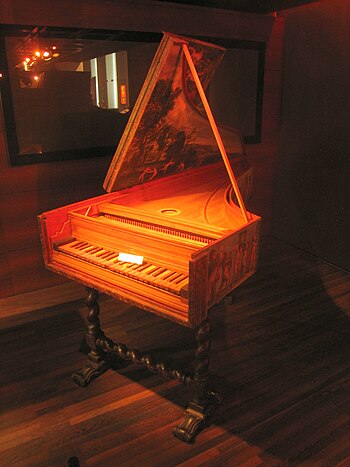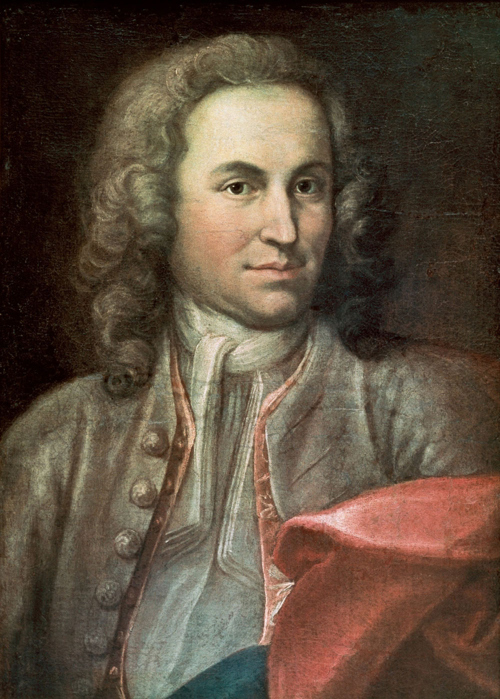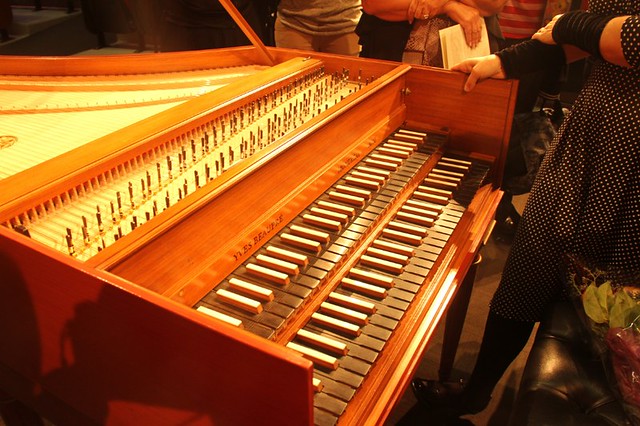 |
Giovanni Battista Boni, Cortona, 1619 - clavecin.
(Photo credit: Wikipedia)
|
Many people mistakenly believe that the harpsichord was the earliest keyboard instrument. Harpsichords were undoubtedly a precursor to the piano. However, the pipe organ actually predates the harpsichord by some 1100 years. In fact, the pipe organ was the only keyboard instrument until the invention of the clavichord and the harpsichord.
The earliest pipe organs were massive structures. Upon their emergence, few companies actually made pipe organs. Even fewer people were trained to install and repair them. Their size and complexity made them difficult to work with, although the sound they produced was magnificent. Pipe organs often contained multiple keyboards to operate the many pipes and produce the rich sounds that the instrument is associated with. Naturally, this was not the type of instrument that the average person played at home. Most pipe organs were located in churches and concert halls.
Eventually, more compact versions were invented. Pipe organs evolved into regular organs, which most people of today are familiar with. They were more easily afforded by smaller parishes and even private owners. They were also much more compact and easier to repair.
 |
Various keyboard instruments (Photo credit: Wikipedia)
|
The clavichord entered the scene in the early 15th century. It first emerged as a "practice instrument." Since not all musicians could afford or had easy access to an organ, the clavichord became a convenient alternative. It provided organists a means for practicing at home without having to go to a church or other location to find an organ. Clavichords were smaller than today's piano and may be compared to today's smaller keyboard synthesizers, minus the need for electricity.
It was likely very shortly after that the harpsichord was invented. The harpsichord more closely resembled today's piano. This may be part of the reason that people believe the harpsichord was the first keyboard instrument. Modern pianos are based on a very similar design to its predecessors. Harpsichords, however, were much smaller (though larger than the clavichord). The harpsichord had many variations that operated on the same basic musical principles. Some of these include the virginal, the spinet and the clavicytherium.
 |
| Hieronymus Albrecht Hass, Hamburg, 1734 - clavecin. (Photo credit: Wikipedia) |
Like music trends always do, the harpsichord fell out of fashion upon the advent of the piano. The piano, though usually a bit larger, produced a cleaner sound. Harpsichords became all but obsolete within just a few decades. Ironically, harpsichords have come back into fashion in recent years because of their unique and distinctive sound. They are often heard as part of the backup for many contemporary songs, though relatively few people actually own a genuine harpsichord.
The piano is by far the most common keyboard instrument today. They are found in nearly every school and church in North America, as well as in millions of private homes. Most every music student has at least some piano training. They are one of the easiest instruments to learn to play and provide a good musical basis for learning other instruments.
Of course, with an electronics-loving society came the natural evolution of the piano to a plug-in version. These are commonly referred to as synthesizers. Aside from the obvious difference from the piano in the requirement of electricity, synthesizers are capable of mimicking many different instruments. Even the most rudimentary of synthesizers usually have several different instrument modes. The more complex the machine, the more sounds it is able to reproduce. More expensive models are extremely complex and technical. Their technology is of such quality that it can be difficult to distinguish their sound from the actual instrument they are mimicking.
New advances in technology, especially in computers, are being made every year. How this will affect the further evolution of keyboard instruments remains to be seen. It appears, though, that the good old fashioned piano is here to stay for a while.




